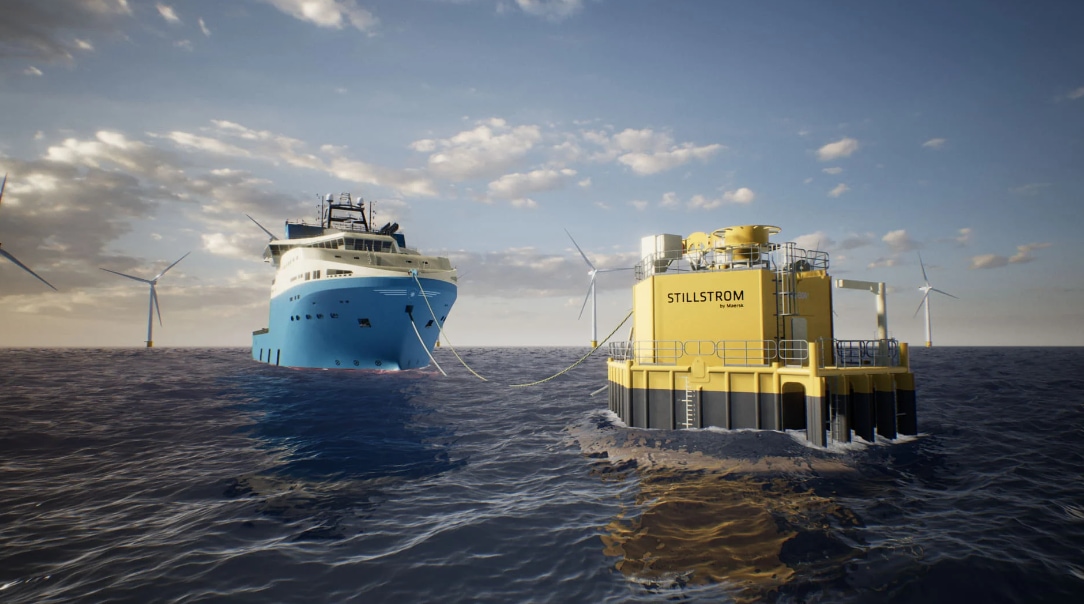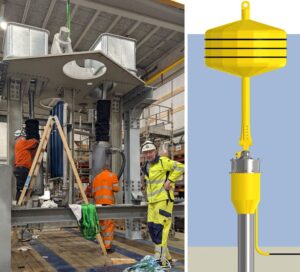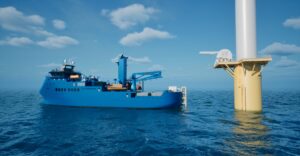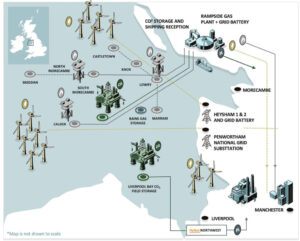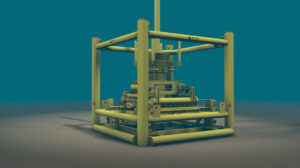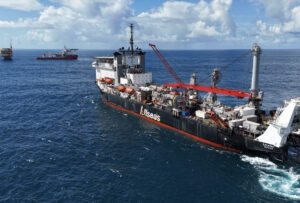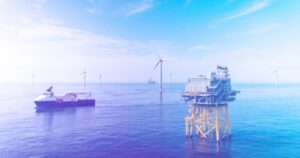In focus: A snapshot of the future of offshore energy
A closer look at this week’s snapshot of the most recent energy transition-related developments in the complex industry that is offshore energy reveals an outline of what the future may hold for the sector.
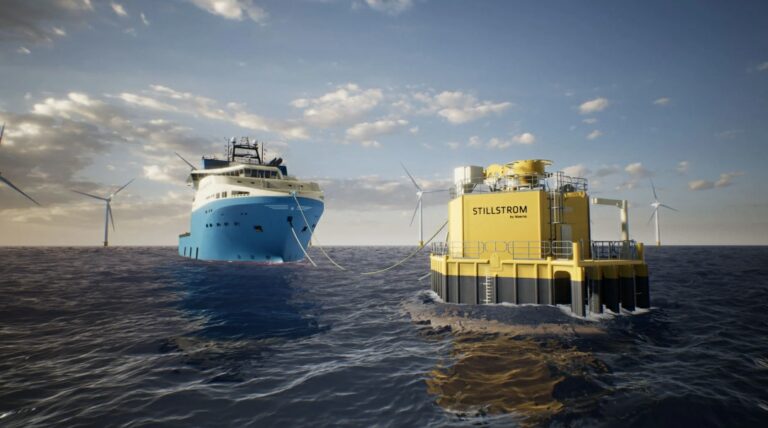
From offshore charging hubs providing renewable energy for vessels outside the ports, CO2 storage and liquefaction hubs, and the potential rise of gas and its liquified form to an increasing number of protests due to environmental concerns attached to the fossil fuels projects, the world, as the older generations know it, is changing and energy – the way we produce it and how we use it – is at the core of this change.
Two studies one goal
One of the first examples comes from Maersk’s offshore charging company, Stillstrom, and the Granite City’s port – Port of Aberdeen – who are building a roadmap for the potential introduction of an offshore charging hub that would use offshore wind or another renewable energy source to power vessels on standby outside the port.
They are now conducting a joint feasibility study to analyse the benefits, use cases, fundamental requirements, economics, and stakeholder involvement for such a hub.
Stillstrom CEO, Kristian B. Jorgensen, expects that this will not only support the journey towards a net-zero ocean economy but also present an economically attractive solution for vessel owners to utilise.
Another feasibility study has recently started and this one is happening in Belgium. Namely, Belgian energy infrastructure group Fluxys, steel and mining company ArcelorMittal Belgium, and North Sea Port are looking to develop a key infrastructure accommodating the CCUS chain in the Ghent part of North Sea Port.
Related Article
-
North Sea Port could become CO2 storage and liquefaction hub
Carbon Capture Usage & Storage
Ghent Carbon Hub is set up as an open-access hub to transport and liquefy CO2 from emitters, provide buffer storage and load the liquefied CO2 onto ships for onward permanent storage.
The feasibility study has now started and the commissioning is targeted for 2027. If developed, Ghent Carbon Hub would have a capacity to process 6 million tonnes of CO2 per annum (MTPA), which is equivalent to around 15 per cent of Belgian industrial CO2 emissions.
The reduction of emissions fits into the North Sea Port’s ambition to halve CO2 emissions by 2030 and be a carbon-neutral port by 2050.
Oil & gas projects under heavy scrutiny
While Belgium is looking to decarbonise, Germany is struggling to secure gas supplies amid an energy security crisis exacerbated by the war in Ukraine and Russia’s volatile mood when it comes to supplying gas.
As part of these efforts, Germany has formally confirmed its intention to have liquefied natural gas (LNG) terminals in Brunsbüttel and Wilhelmshaven ready at the turn of the year 2022/2023.
With that in mind, Robert Habeck, Vice-Chancellor and Federal Minister for Economic Affairs and Climate Action this week signed a memorandum of understanding with local energy companies Uniper, RWE, and natural gas company VNG regarding the supply of the floating LNG terminals.
Related Article
-
Germany secures LNG supply via chartered FSRUs
Authorities & Government
But, only days before this agreement was announced, German energy company RWE and Uniper faced a protest over plans to buy LNG from the global portfolio of Australia’s Woodside, which includes the Scarborough offshore gas project.
Woodside has already been facing opposition from environmental groups who are seeking an injunction to restrain this project’s activities.
The ripple effect of this Australian gas project and the movement against it has now reached the German port of Brake as a group of Greenpeace activists decided to block freighter Emma Oldendorff. The ship was carrying pipelines for delivery to Western Australia and for use on the Scarborough project.
Greenpeace believes that the project threatens to undermine Australia’s efforts to drastically slash emissions this decade and achieve net zero emissions by 2050.
These days, it is evident that there is an ever-growing global movement against oil and gas developments with many new projects coming under scrutiny by environmental groups. In addition to recent troubles with the Bay du Nord project in Canada and Rosebank in the UK, Norway’s energy giant Equinor has also been facing fierce opposition over its plans to conduct seismic surveys in the waters of the Argentine Sea.
Related Article
Greenpeace Argentina has been campaigning against these surveys for over two years and it had previously stopped the efforts to begin the seismic exploration over acreage located offshore Argentina. However, Equinor’s revised proposal has recently been accepted by the government and the environmentalists are now demanding for it to be annulled.
The environmental organisation believes that this latest resolution “exposes the plans of the Argentine government to continue investing in fossil fuels, and therefore deepen the climate crisis with misleading promises of development.”
Expanding into renewables
As it stands, the global transition to clean and renewable sources of energy cannot be made overnight. One of the first steps within that process is developing a supply chain and the companies that were traditionally involved in the oil and gas sector have also been expanding into renewables.
Back in 2020, Norway’s Havfram, previously known as Ocean Installer, revealed its increasing commitment to offshore wind, using revenues from oil and gas projects to create a player in the offshore wind segment. Now, in an effort to move forward in the industrial energy transition, Havfram has appointed a new CEO to grasp the opportunities in the next development phase for the company.
Furthermore, Semco Maritime, an offshore engineering company well known in the European oil and gas sector for providing, among others, services for offshore rigs, has recently teamed up with a Danish wave energy start-up, Exowave, to build the future wave energy sector’s value chain.
Related Article
-
Exowave and Semco Maritime form strategic partnership for wave energy
Business Developments & Projects
The partnership will see Semco Maritime providing manufacturing and offshore expertise to Exowave, for the rollout of its wave energy conversion technology in the North Sea at first and on an international scale moving forward. It will also support the further expansion of Semco Maritime into the growing renewable sector.
Claus Eilersen, director of projects for Semco Maritime, said that the partnership with Exowave well aligns with the company’s strategy of taking part in the fast-growing transition to renewable energy.

